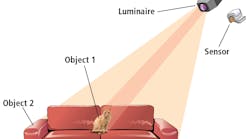You may have seen a story circulating around the internet in the last few days, concerning LED research carried out by Cambridge University in the UK – see press release.
I looked at the story, and couldn’t see much of interest, so LEDs Magazine didn’t cover it. But now, the story has become the story, prompted in part by a couple of letters I received, one of which is reproduced below.
The researchers appear to have developed a chip manufacturing process to deposit gallium nitride (GaN) on silicon, which could – potentially – lead to a significant reduction in production cost. But this research work has been spun into the ultimate solution to all the issues being faced by the lighting industry. “It could well be the holy grail in terms of providing our lighting needs for the future,” says the press release.
The resulting stories are packed with similar examples of hyperbole. We’ve written extensively about the dangers of manufacturers making extravagant (and in some cases blatantly untrue) claims about the performance of their product, and the consumer backlash that may result. This seems to be a related example from the research community.
For example, the UK’s Daily Mail newspaper ran a story under the headline “Great bright hope to end battle of the light bulbs" in which they said that “Cambridge University researchers have developed cheap LED bulbs that produce brilliant light but use very little electricity. They will cost £2 and last up to 60 years.” (£2 was $4 not so long ago, but is now only $2.85).
It’s not surprising that the Daily Mail jumped all over this story, having launched a hate campaign against compact fluorescent lamps in the wake of the European decision to (effectively) ban incandescent lamps. People expect this kind of thing from the Daily Mail, but probably not from the New Scientist, which ran a story entitled “Cheap, super-efficient LED lights on the horizon".
At least New Scientist explained why the ability to grow LEDs on six-inch silicon wafers (using aluminum gallium nitride buffer layers) rather than on smaller sapphire wafers could lead to significant cost reductions. Basically, silicon is cheap and you can make lots of LEDs on larger wafers. But you have to consider minor things like uniformity, reproducibility and yield.
Growing gallium nitride on silicon isn’t easy, people have been trying to do it for years. If the Cambridge University nitride team has cracked the problem, then they should be applauded. Cree, one of the world’s best and most experienced LED manufacturing companies, makes LEDs on silicon substrates; but the GaN layers are transferred to the silicon, not grown directly on it. Wonder why not?
Another factor is the performance of the LEDs grown on silicon; will they be able to achieve required levels of luminous flux and efficacy? What about binning of white LEDs?
High-volume manufacturing is of course key if you’re talking about LEDs that can take over the lighting world. Cambridge is working with RFMD, a semiconductor manufacturer that took over Filtronic’s UK facility, to develop a production process as part of a UK government-funded project – see UK group plans to develop LEDs on 6-inch silicon wafers.
The potential is there to make good use of this research work, but there are so many hurdles that need to be overcome before this has a real impact on the lighting industry. Until then, how about we rein in the hype?
+++++
Letter to the Editor: Hype or reality - the recent PR from Humphreys' Cambridge lab
Dear Sir
My company is committed to finding an alternative to the incandescent bulb for use in our medical products, the majority of which cannot use CFLs as alternatives. LEDs represent such an alternative but the current cost of LED lumens is greatly in excess of those derived from incandescent lamps. Nevertheless, we are keeping a very close eye on LED developments.
Yesterday's PR in both the Cambridge News and the Daily Mail which was picked up by the BBC suggested that a significant improvement in device construction had been announced by Humphreys' group at Cambridge, an improvement which would lead to LED bulbs with 60-year lifetime and costing £2 each.
I fail to see that this is any more than an incremental development which will have a commensurate effect in the development of these bulbs. If this is the case then it would appear that this PR is more hype than reality otherwise I'm sure it would've found its way into LEDs Magazine's newsletter. Our industry would be better served without this hype.
Sincerely,
Dr Doug Fernie
Lumie, Cambridge
+++++




